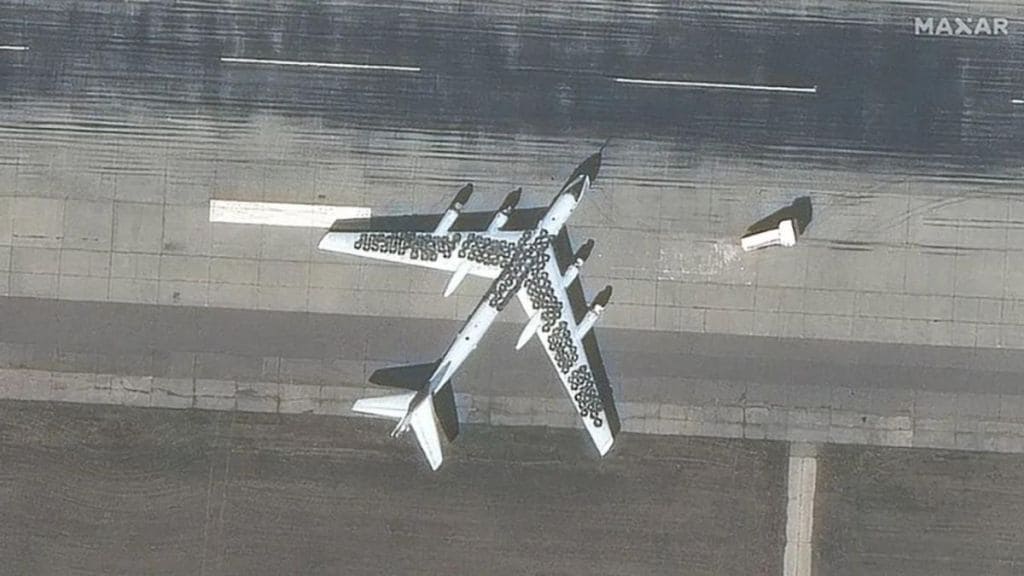Moscow’s military has recently adopted an unconventional measure by draping car tires over some of their attack aircraft, a move suspected to be an impromptu effort to shield these planes from successful Ukrainian drone attacks on Russian military airfields. Satellite images from Maxar, taken at the Engels Airbase deep within Russia, reveal the presence of two Tu-95 strategic bombers adorned with car tires atop their airframes.
CNN could not independently verify the exact purpose of the tires, but experts suggest that this initiative might serve a dual function. Firstly, it could be a rudimentary strategy to provide an additional layer of defense against Ukrainian drones, which have proven increasingly adept at targeting Russian military airports. Secondly, it might be aimed at reducing the visibility of the aircraft, particularly during nighttime operations.
However, the efficacy of this tactic is debatable. Francisco Serra-Martins, representing drone manufacturer One Way Aerospace, explained that while it might diminish the thermal signature of exposed strategic aviation assets on airfield aprons, they would remain detectable through infrared cameras.
Steffan Watkins, an open-source research consultant specializing in tracking aircraft and ships, opined that the tires could potentially serve as a means to mitigate the impact of explosions from above, preventing fragmentation from piercing the aircraft.
A NATO military official, requesting anonymity, acknowledged the tire-covered planes and suggested they were likely intended to defend against drones. The official expressed uncertainty about the effectiveness of this measure.
Recent weeks have seen Ukraine display increased audacity in targeting strategic assets within Russia through aerial assaults, even as its own cities face attacks. This shift in tactics underscores Kyiv’s determination to erode domestic Russian support for the ongoing conflict.
Notably, Ukraine executed a substantial drone attack last week, affecting six Russian regions, including Moscow, marking the largest such assault on Russian territory since the invasion of Ukraine commenced. In Pskov, near the Estonian border, drones reportedly damaged several transport planes at an airport.
In August, Ukraine conducted drone strikes on bases housing supersonic bombers deep within Russian territory, aiming to diminish Russia’s airpower, which has posed a significant hurdle to Ukraine’s counteroffensive.
Russian forces have previously resorted to unorthodox makeshift solutions to safeguard equipment from Ukrainian attacks, such as fitting metal cages on their tank turrets to mitigate the impact of modern anti-tank weaponry designed to penetrate armor from above.
The aircraft adorned with tires at the Engels airfield began circulating on X, the social media platform formerly referred to as Twitter. This occurrence also drew derision from Ukrainians and garnered minimal response from the typically outspoken Russian propagandists.

